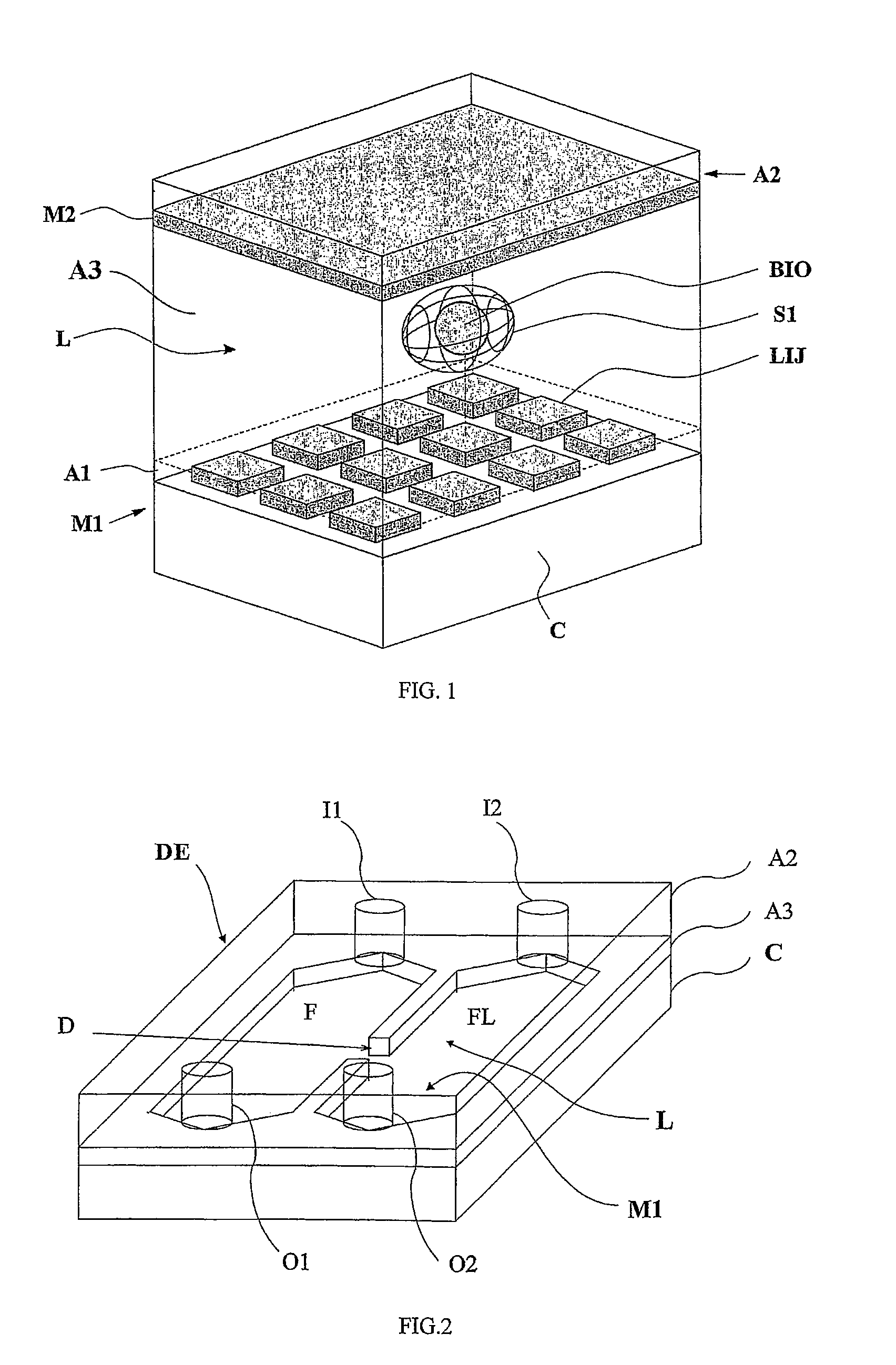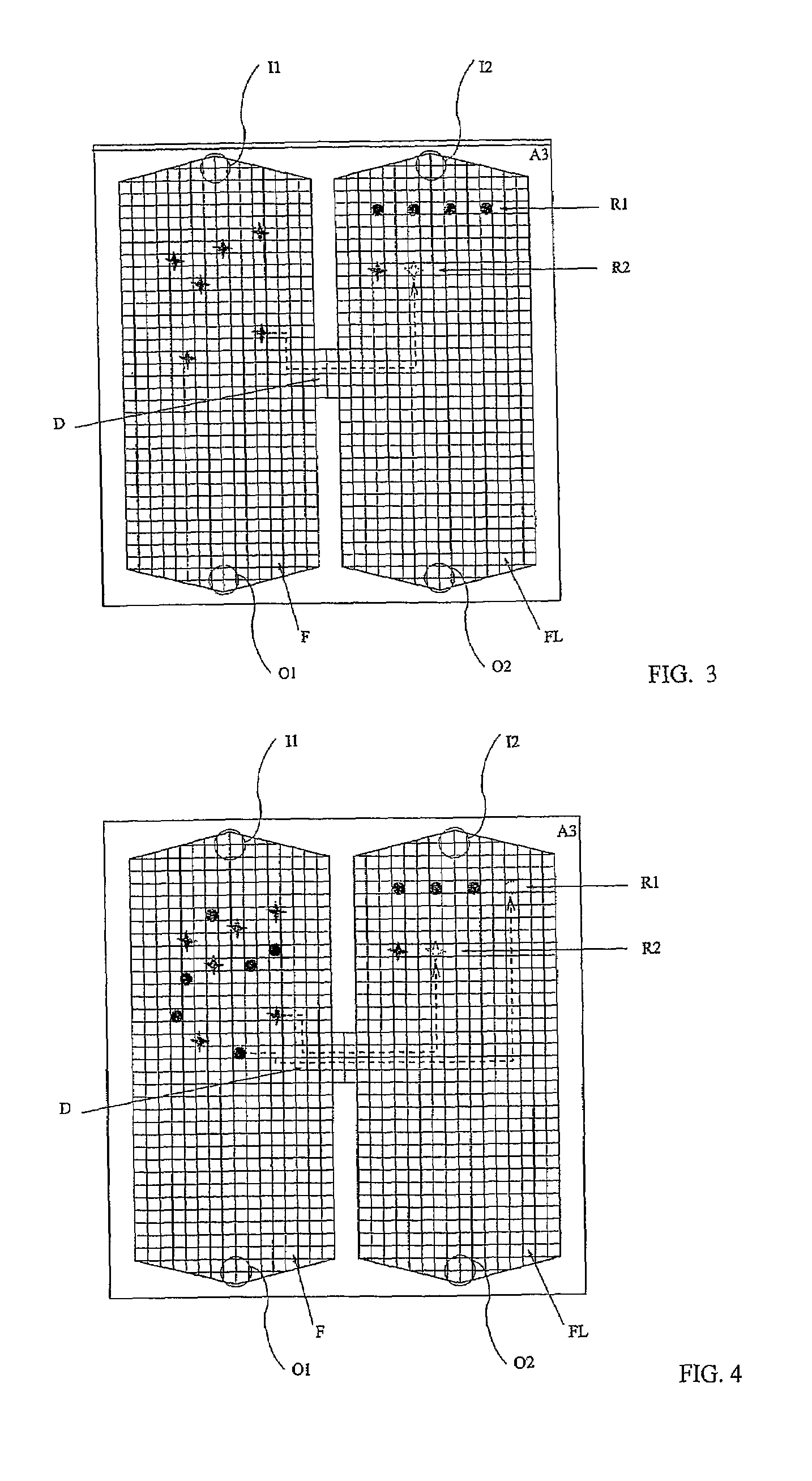Method and apparatus for high-throughput biological-activity screening of cells and/or compounds
a biological activity and cell technology, applied in the direction of electrolysis components, material analysis by electric/magnetic means, solid separation, etc., can solve the problems of long studies, less and less acceptable culturally in the united states and in europe, and the current procedures for cell-drug interaction analysis ne presenting high throughput nor high biological value, and achieves rapid, efficient, economical, and high throughput. , the effect of high throughpu
- Summary
- Abstract
- Description
- Claims
- Application Information
AI Technical Summary
Benefits of technology
Problems solved by technology
Method used
Image
Examples
Embodiment Construction
[0077]With reference to FIGS. 1 and 2, the present invention is based on the use of a testing device embodying a technology disclosed in international patent application WO 00 / 69565, filed by the same applicant, of which the content is imported here insofar as it provides a useful reference for the purposes of the present disclosure; in effect, the device described herein incorporates new and original structural features not mentioned in the aforementioned application, designed especially in such a way that the test and assay methods according to the present invention can be performed simply, efficiently, economically and with a rational use of space.
[0078]The proposed device, illustrated schematically in FIG. 1, comprises two main modules, of which a first consists in a array M1 of electrodes LIJ arranged in orderly rank and file on an insulating support structure A1. The electrodes LIJ can be fashioned from any given conductive material, selected preferably from the metals compati...
PUM
| Property | Measurement | Unit |
|---|---|---|
| Time | aaaaa | aaaaa |
| Force | aaaaa | aaaaa |
| Strength | aaaaa | aaaaa |
Abstract
Description
Claims
Application Information
 Login to View More
Login to View More - R&D
- Intellectual Property
- Life Sciences
- Materials
- Tech Scout
- Unparalleled Data Quality
- Higher Quality Content
- 60% Fewer Hallucinations
Browse by: Latest US Patents, China's latest patents, Technical Efficacy Thesaurus, Application Domain, Technology Topic, Popular Technical Reports.
© 2025 PatSnap. All rights reserved.Legal|Privacy policy|Modern Slavery Act Transparency Statement|Sitemap|About US| Contact US: help@patsnap.com



